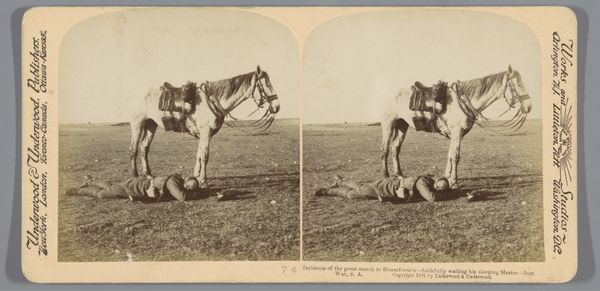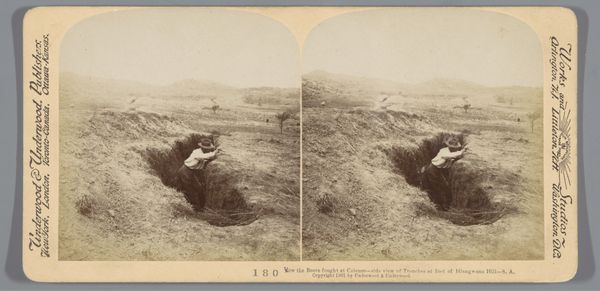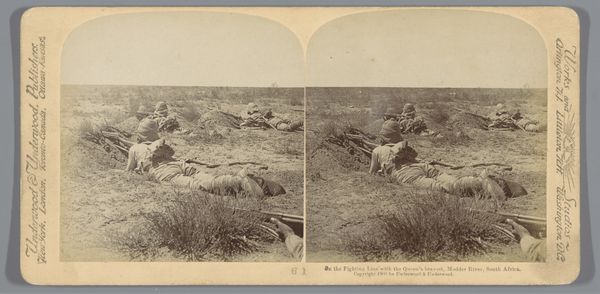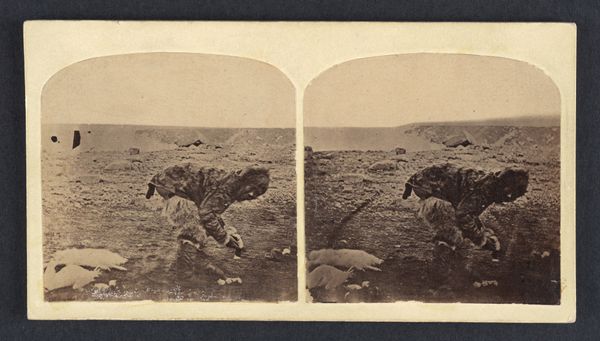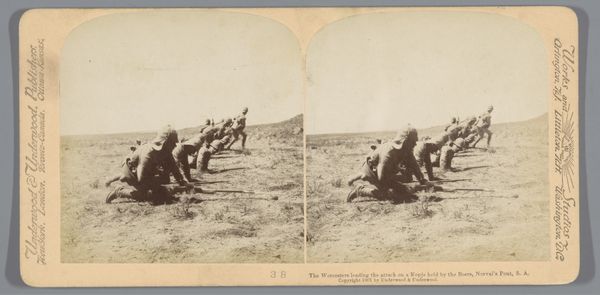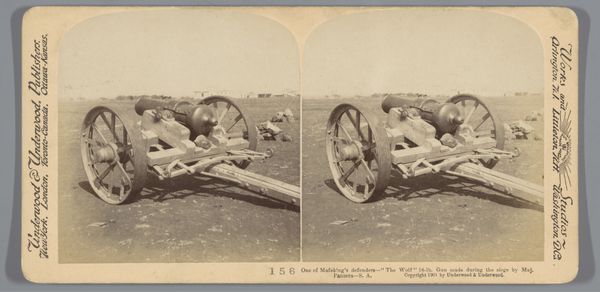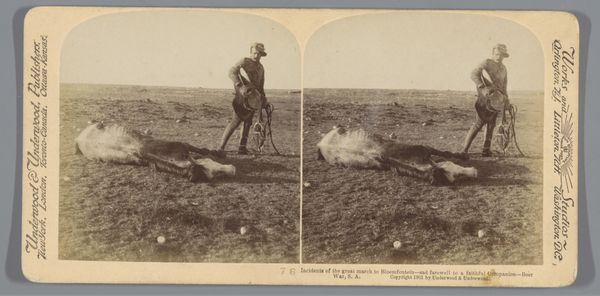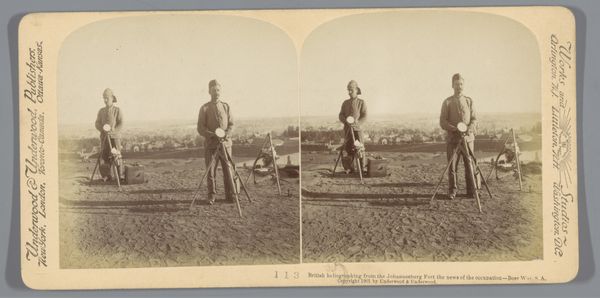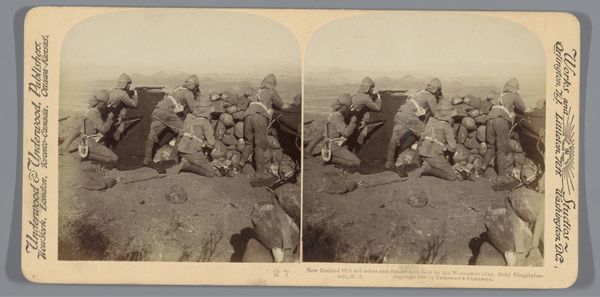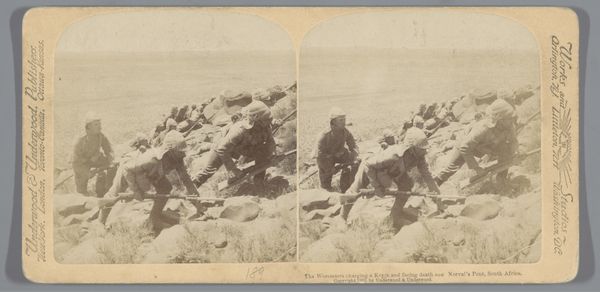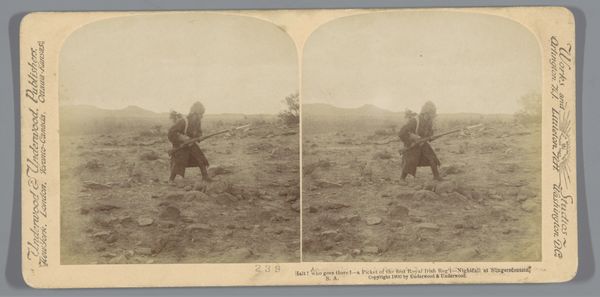
photography, gelatin-silver-print
#
portrait
#
landscape
#
photography
#
coloured pencil
#
horse
#
gelatin-silver-print
#
realism
Dimensions: height 88 mm, width 178 mm
Copyright: Rijks Museum: Open Domain
Editor: This gelatin-silver print, titled "Een soldaat naast zijn stervende paard onderweg naar Bloemfontein," was taken in 1901. It’s a poignant scene, almost unbearably melancholic. What historical context might give it even deeper meaning? Curator: This image captures a soldier with his dying horse, likely during the Second Boer War. But beyond a simple depiction of grief, it invites us to consider the romanticized narratives of warfare that often obscure the brutal realities of colonial conflicts. Notice how the photograph idealizes the bond between man and animal amid imperial violence. Doesn’t it provoke questions about power dynamics inherent in such a relationship, and moreover, the larger conflict? Editor: It does, actually. I hadn’t considered how it almost sanitizes war through that lens. It's presented as some beautiful sacrifice... Curator: Exactly! Think about the systemic dehumanization of colonized peoples often intrinsic to these portrayals. This photograph, produced by Underwood & Underwood, was intended for mass consumption via stereoscopes. How does understanding it as a form of propaganda shift its interpretation? Doesn't that alter our view on its seeming romanticism? Editor: Mass consumption for propaganda... It feels different now, almost manipulative. Seeing it as just a nice scene ignored the bigger, uncomfortable truths it downplays. Curator: Precisely! Recognizing its place within broader socio-political structures reveals the image's layered complexities, making it a powerful case study in the ethics of representation. It urges us to confront uncomfortable aspects of our shared history, doesn't it? Editor: It definitely does. I appreciate how you pushed me to look past my initial impression. Thank you! Curator: My pleasure. I think looking at art this way can change the conversation of how people perceive art’s role in the world today.
Comments
No comments
Be the first to comment and join the conversation on the ultimate creative platform.
